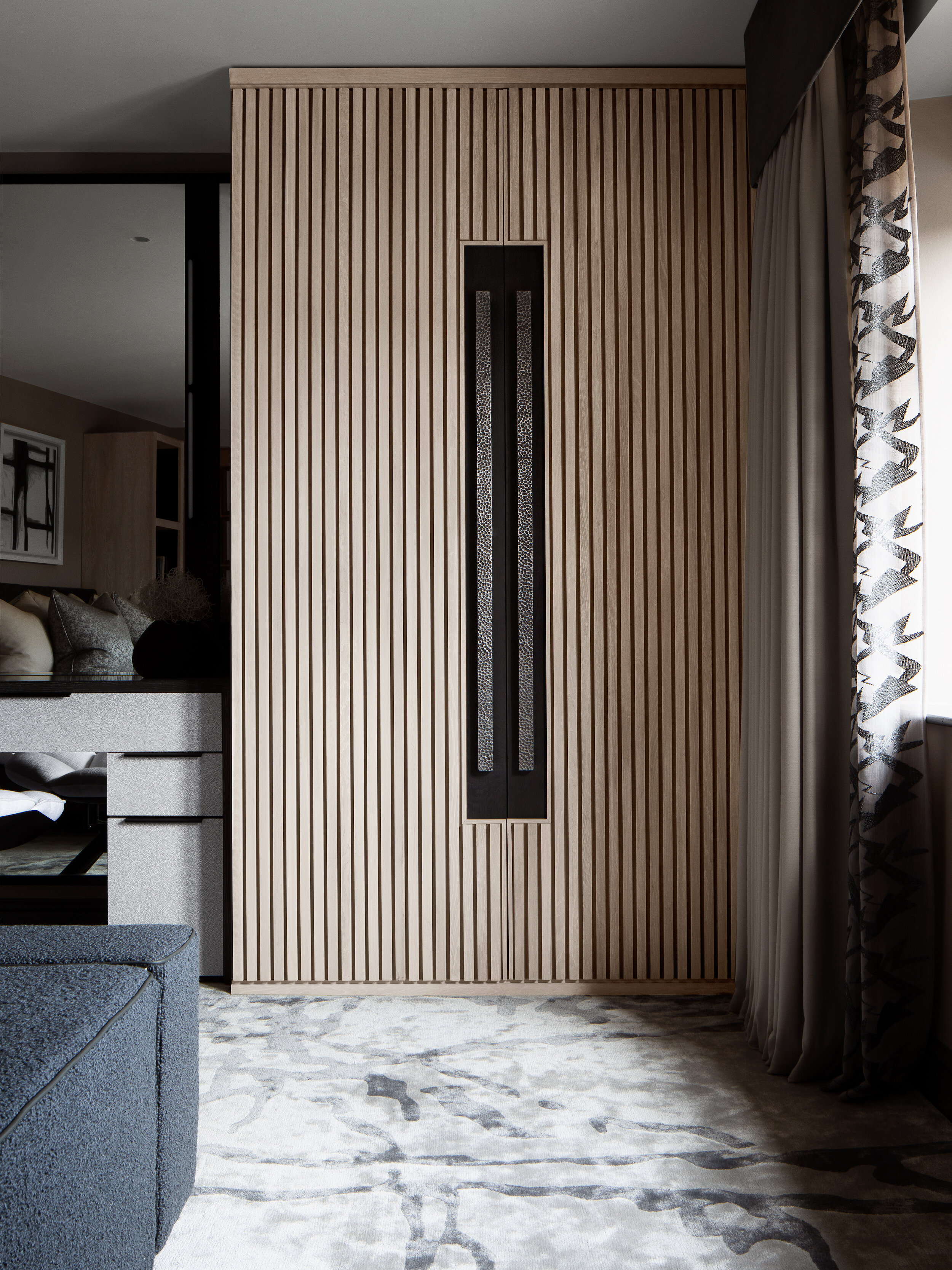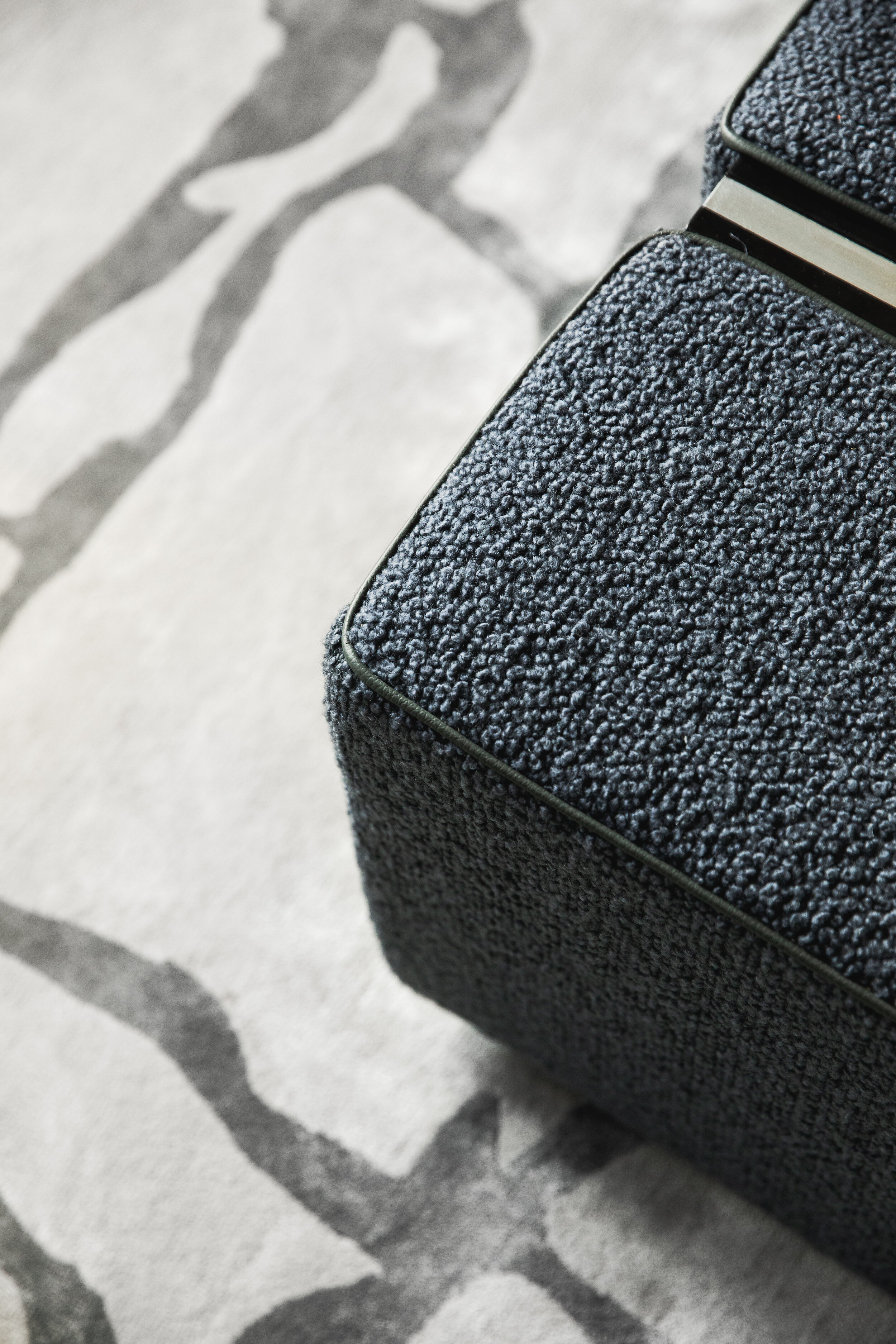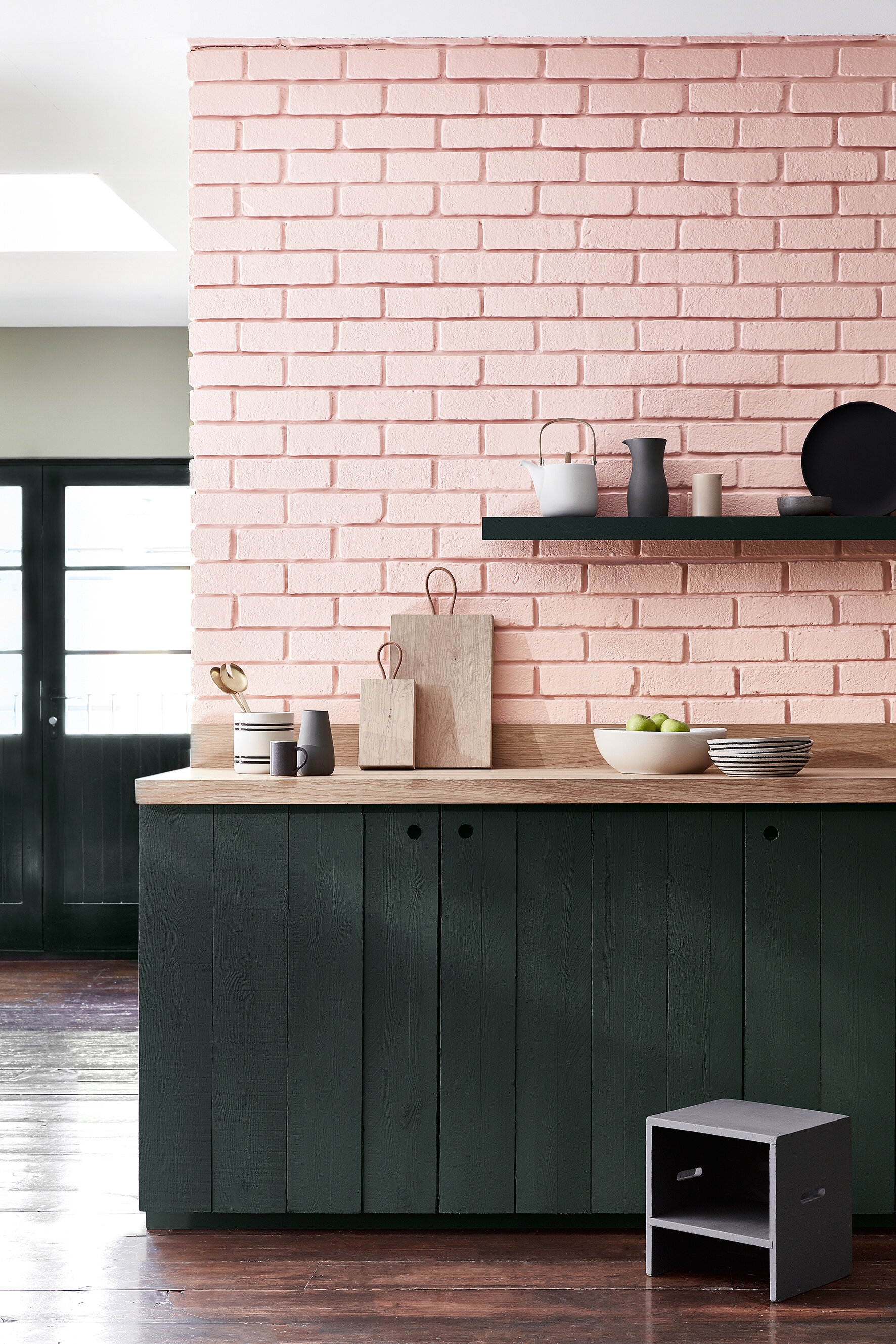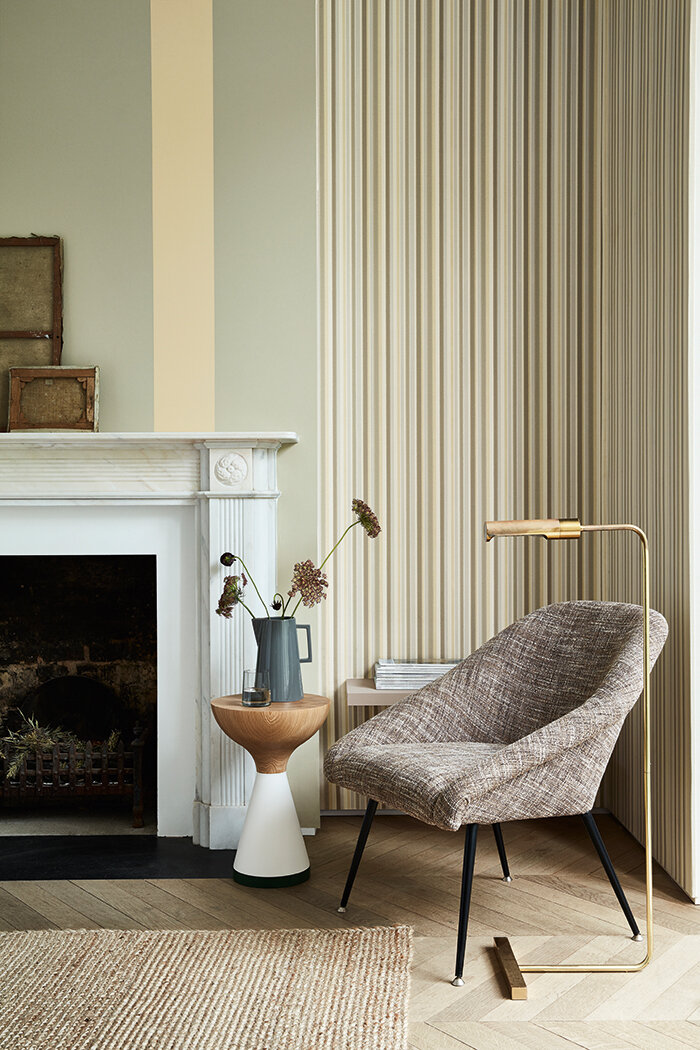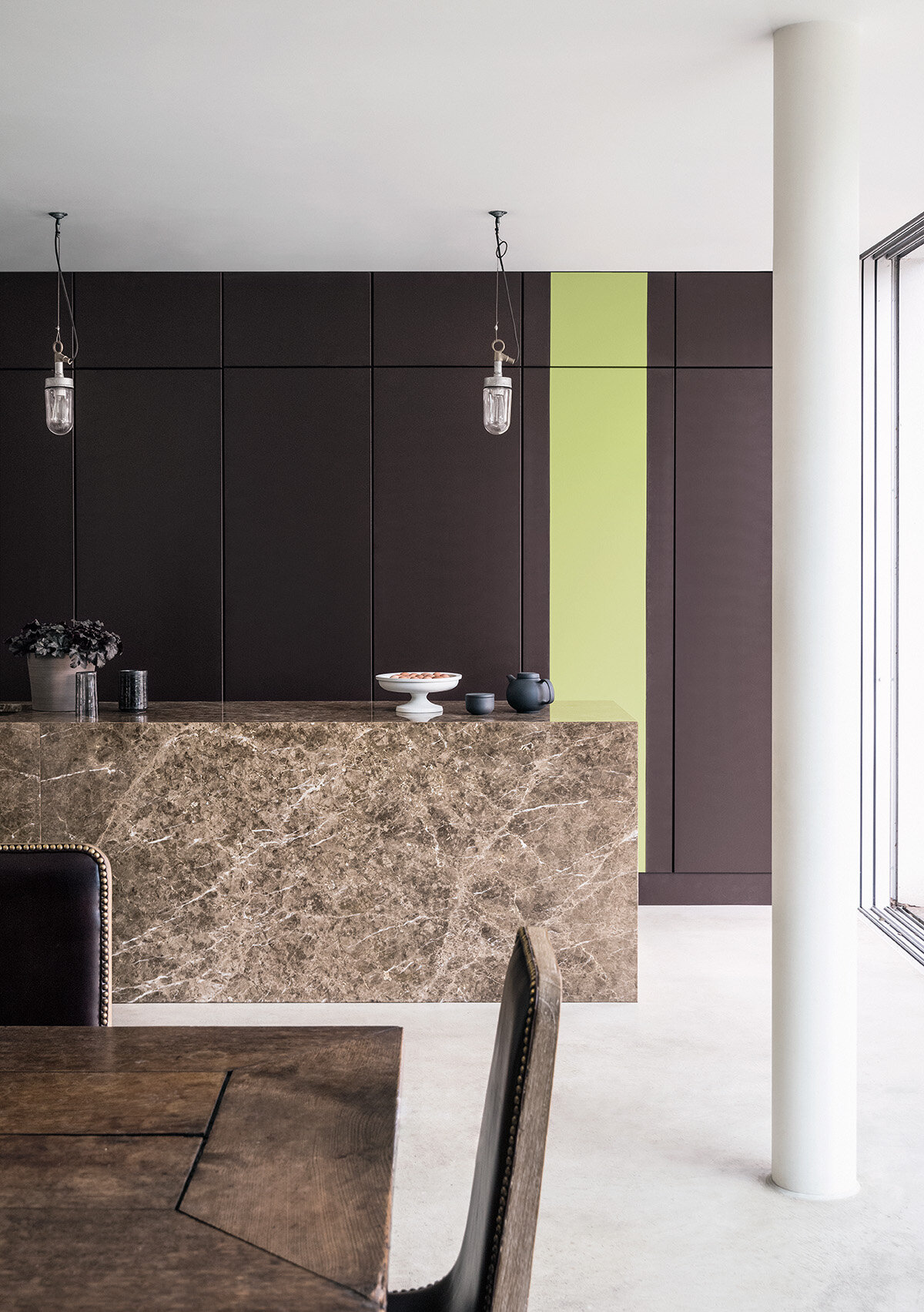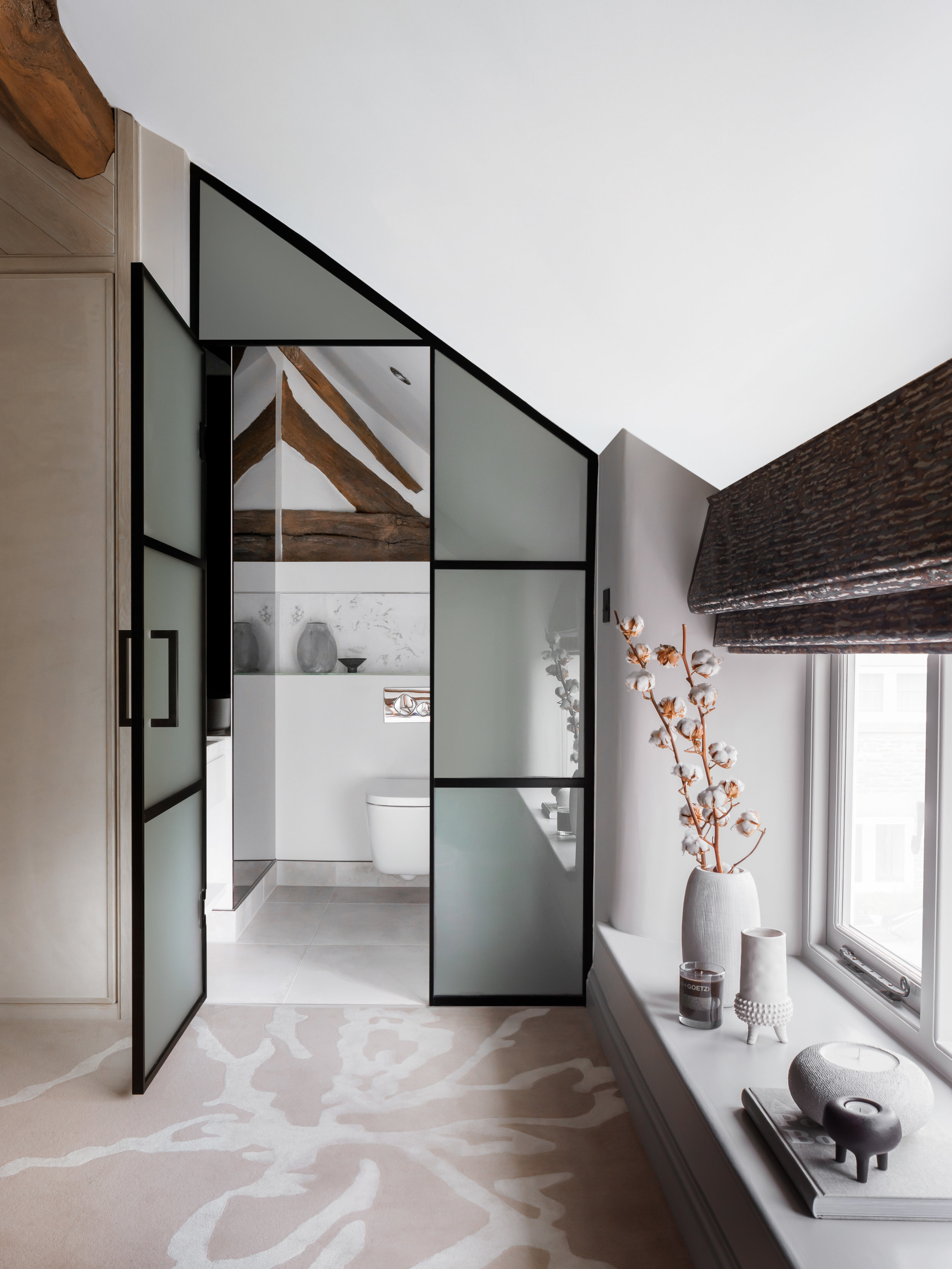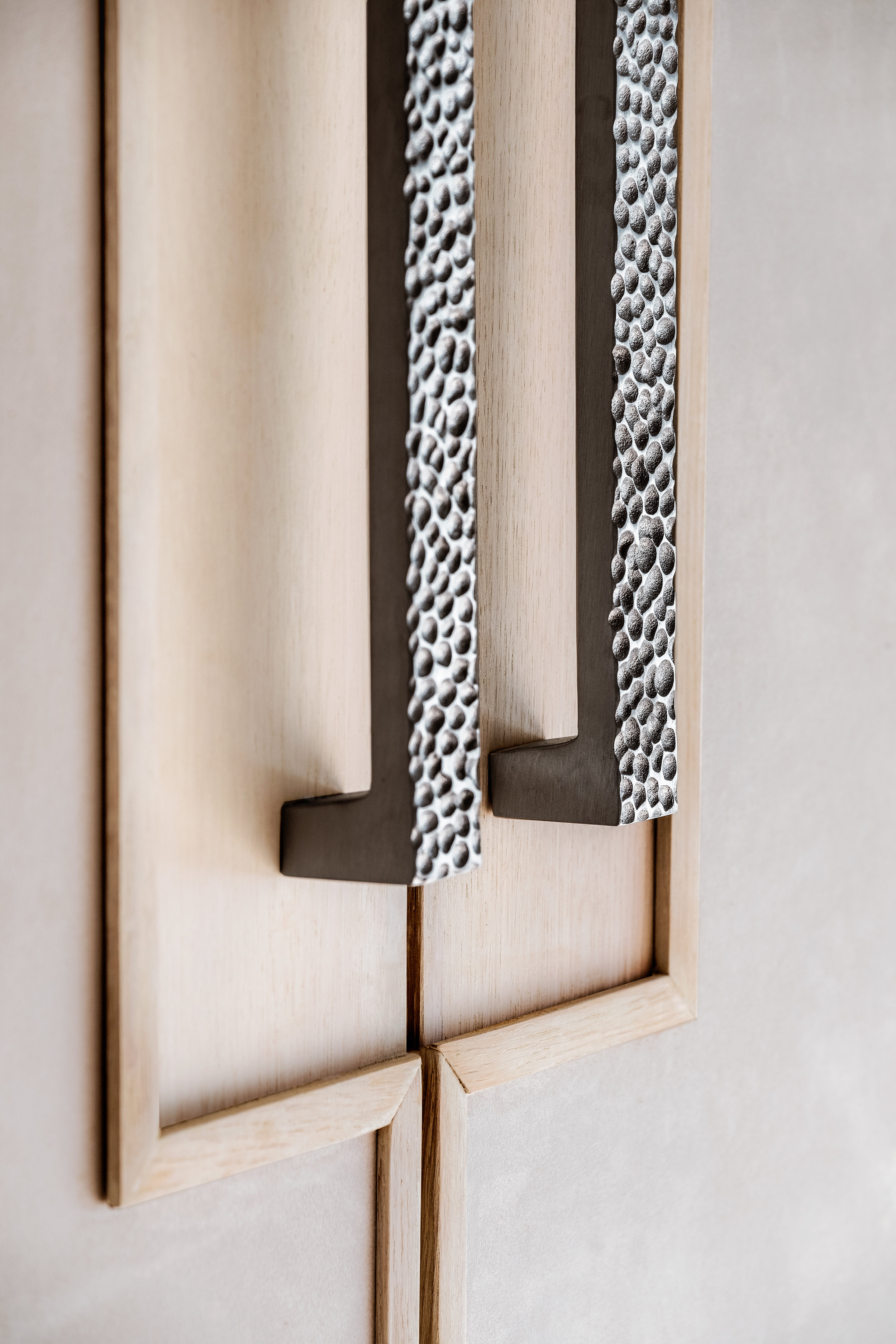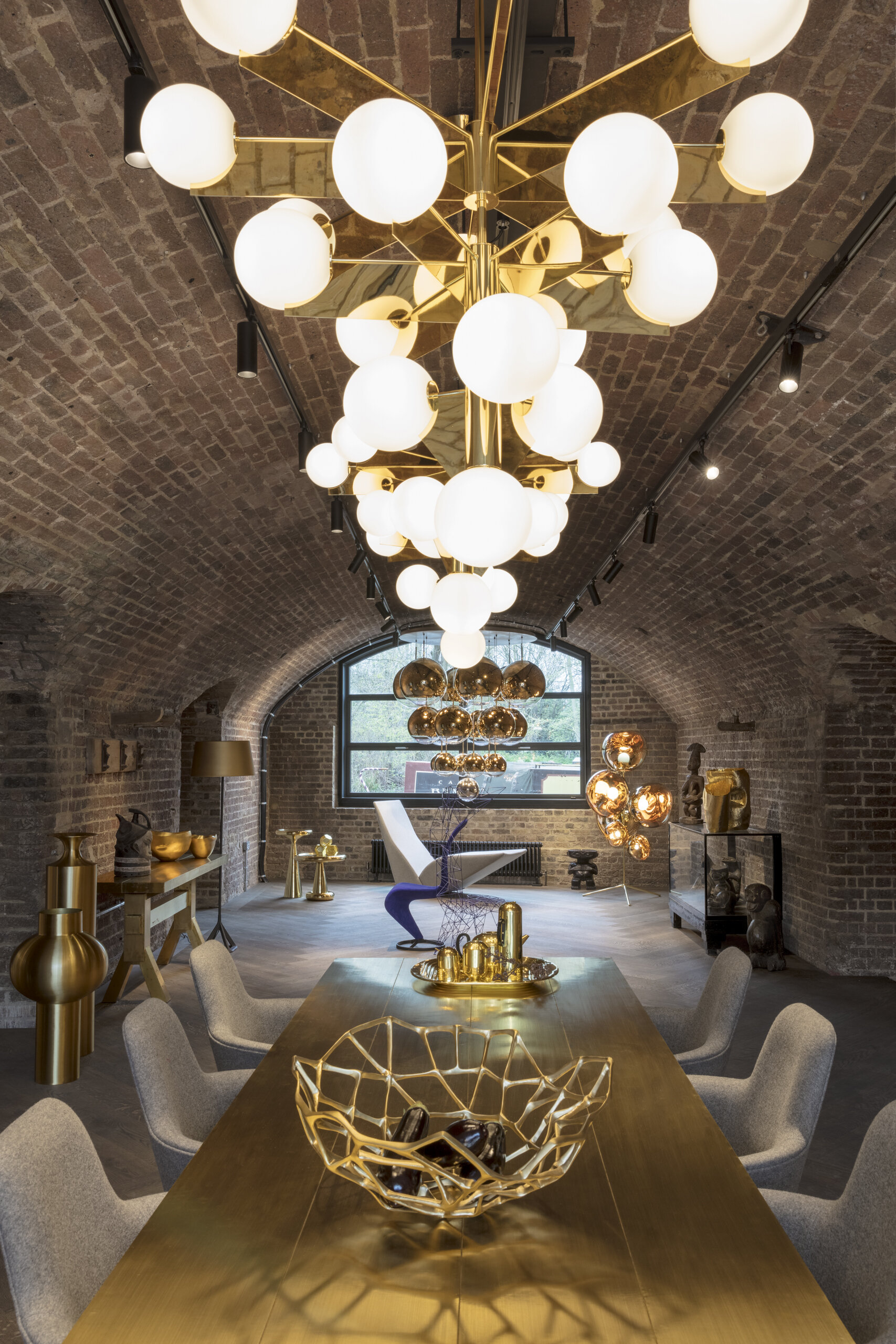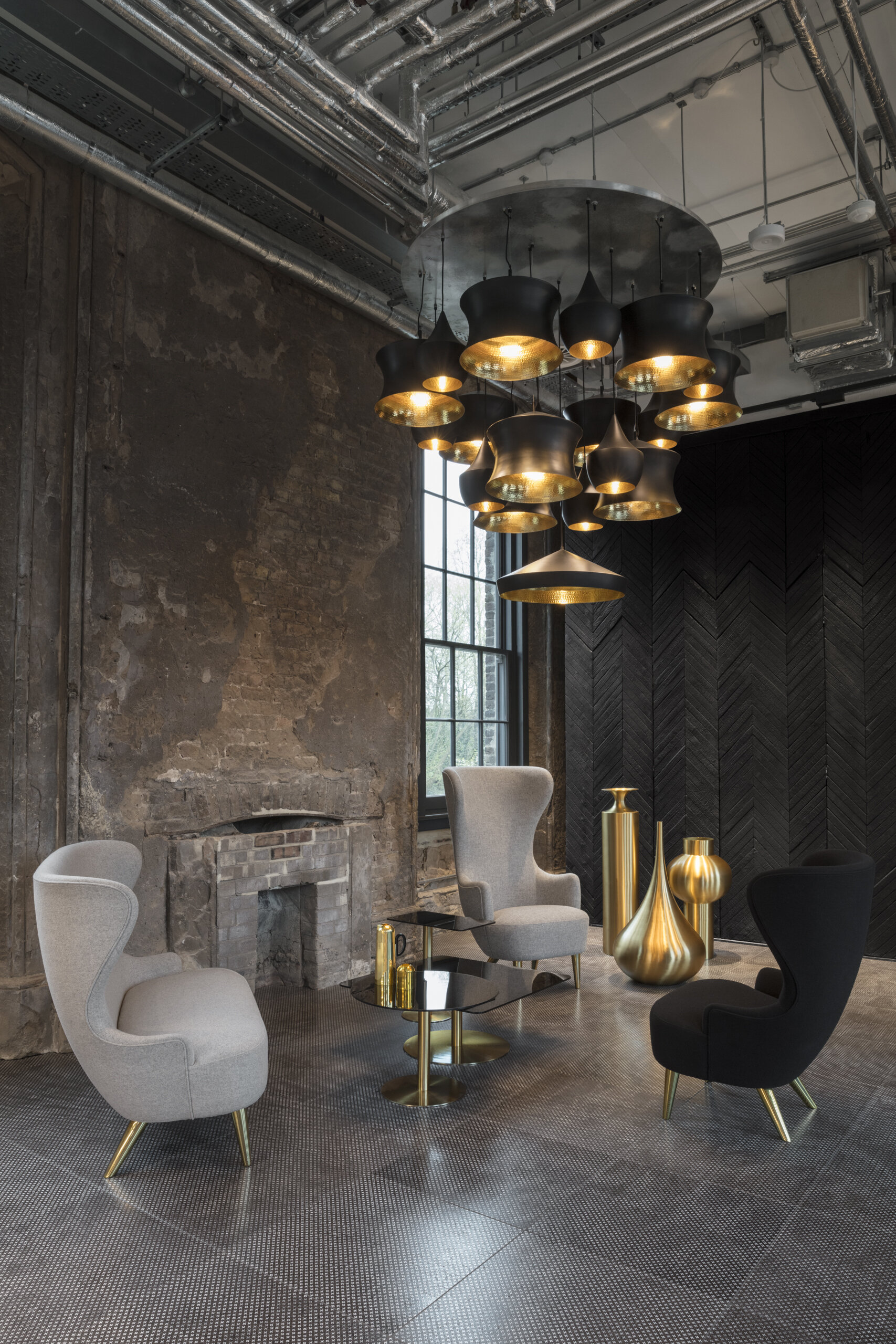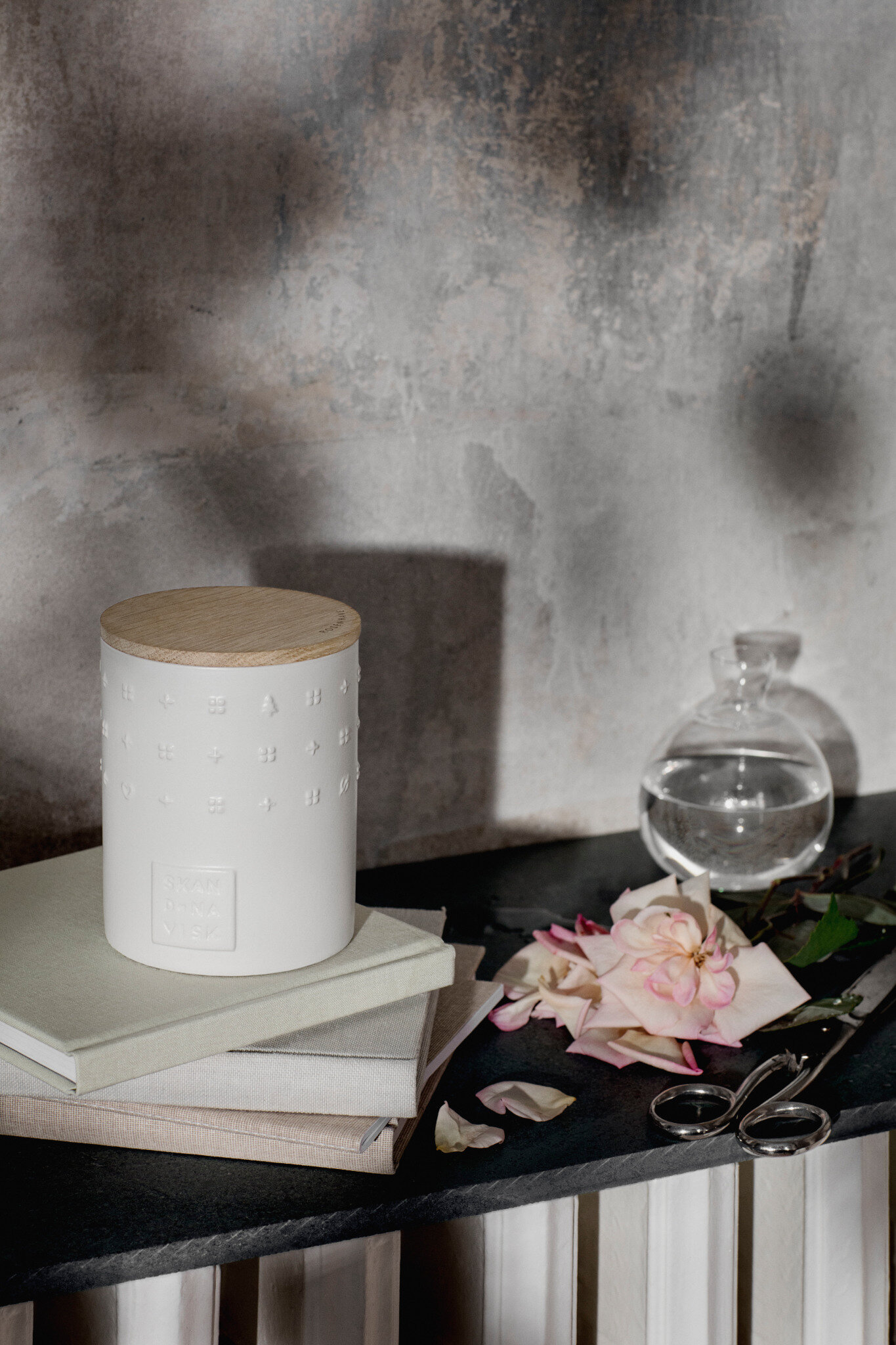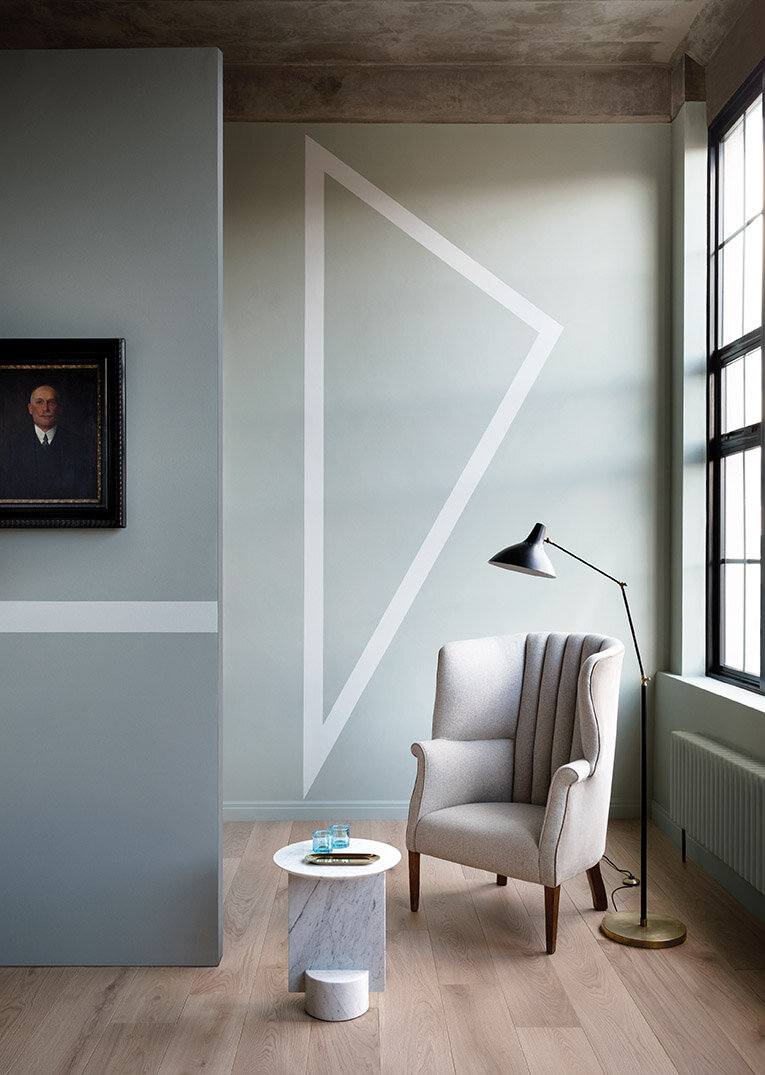The Importance of Understanding the Difference between an interior designer and a home stager.
Attempting something for the first time can be daunting and hiring an Interior Designer is no exception. Knowing if your visions will align, if they are qualified professionals, how long a project takes to complete and most importantly; what is billable - are all are common questions to ask yourself. This weeks journal entry provides inspiration for the types of questions to not only ask your designer but yourself - before hiring.
As an accredited Interior Architecture and Design practice clients are often surprised what a full Interior Design service involves.
Understanding that professional Interior Designers will look at the whole vernacular of a space, and apply a highly detailed level of technical skills into the interior architecture and spatial design, achieving a highly considered and elevated space.
Identifying what value a professional Interior Designer brings to your project, and that it is not merely their creative eye that you are commissioning, but also understanding that they bring value through their high level technical capabilities and interior architectural approach. As you embark upon your project it is important that you achieve a synergy with your chosen designer, sharing a common desire for the resulting possibilities. This will often come from considering not only the unique skills that they bring, but also their particular creative perspective.
Interior Designers are experienced qualified professionals who are looking to deliver a high level bespoke service. They will have a strong portfolio of work to demonstrate their unique design approach. Whilst many designers will be able to shift across design styles, and meet varying client briefs, it is an important consideration to select an interior designer based upon their creative zone of genius and particular speciality.
It is not uncommon for prospective clients to contact a professional Interior Designer looking for colour advice and dressing/styling services. Whilst this does form part of a larger package of professional interior designers services, as a stand-alone service this typically falls more in line with the service offering of a Home Stager or Home Stylist.
In The United States this type of professional service is widely embraced and is much more common place than it is in the UK, often being referred to as an Interior Decorator, however, in the UK this can lead to confusion as this terminology would be more commonly understood to be a painter, hence why some Interior Stylists/Home Stagers often prefer to identify themselves as Interior Designers, making it complex for a client to differentiate between the two professions when the lines are so blurred.
Professional accreditation is both an important measure of a designers professional competence and academic training, whilst simultaneously offering consumers the confidence in knowing that the professional that they are looking to hire is not just a hobbyist and will approach their project with diligent care and skill.
Rachel Usher Interior Design is a fully accredited Interior Design practice with the Society of British and International Interior Design (SBID) , a tightly regulated body which requires all members to meet a stringent criteria for accreditation and follow a strict code of ethics and conduct. This particular accreditation also allows designer to achieve International recognition of professional skills which is particularly important if working overseas. We are a multi disciplinary team and all Interior Designers within our team are full professional members of SBID.
Equally, there is the Home Staging Association UK & Ireland offering accreditation and professional credibility for Home Stagers and Home Stylists, bringing recognised integrity to an alternative group of interior professionals. Rachel Usher Interior Design is not a member of the Home Staging Association, being an Interior Design and Interior Architecture practice Home Staging is not one of our offered services.
The role of an Interior Stylist or Home Stager within the industry is not to be dismantled, indeed our studio is often approached to undertake this type of work and invariably we have to decline these opportunities finding that such work is not a good fit for our team, accepting projects that are not a good fit would also be a disservice to the client.
Home Stagers / Stylists can often execute projects more quickly and typically for a lower investment due to the reduced amount of technical planning work and site remodelling required. Home Stagers / Stylists offer a skill set and professional experience which can transform peoples homes and provide a simpler level of support and guidance to clients who are looking for a creative eye to achieve light cosmetic decorative results that they themselves could not have imagined.
Understanding the different professional services, and associated professional bodies will guide clients in ensuring that the correct professional most suited to their project deliverables, is appointed.
We’ve put together five key questions to ask any Interior Designer or Interior Architect as well as five important questions to ask yourself - for clarity and peace of mind from the very beginning of the process.
5 key questions to ask an Interior DesignER or Interior Architect
1.
How do I know that you are a PROFESSIONAL interior DESIGN service ?
There is a difference between hiring an Interior Designer or Interior Architect to that of a Home Styler/Stager - Interior Designers and Interior Architects are technically skilled, experienced and formally trained in executing bespoke, structural visions. You can learn more about what makes interior design a profession, rather than a hobby here.
All good Interior Design practices will be able to demonstrate skill, knowledge and experience through a portfolio of work. If you are presented anything that you don’t understand, technical drawings for example, ask the designer to explain these to you - this will provide you with an even better understanding of both the designers technical knowledge and experience.
2.
Do you have a predefined design style or are you able to design based on an individual clients AESTHETIC aspirations?
Some clients seek a particular Interior Designers services as way of attaining a particular predefined style - which in most cases the designer is well known for, whilst others prefer to work with a designer as a means to finding their own unique look.
A reputable designer will be able offer both, catering to the individual client their own vision through various principles. At Rachel Usher Interior Design we consider the various senses when concepting a space; light, texture, scent and colour are all considered and developed based on an individual clients needs and aspirations. This approach combines what we see as integral to the success of a design and allows the clients individual sense of self and style to be reflected through our strong design perspective.
3.
Are you able to work to my budget, which is…
It is extremely important to approach design budgets with a realistic and transparent approach. Experienced designers are able to design spaces which meet varying budget requirements and will provide honest feedback from the beginning if a budget doesn’t align with the clients aspirations.
An Interior Designer won’t be able to provide an exact figure for the project as a whole from the very beginning as it takes time to develop a design and to identify the specific associated costs. They will however be able to explain what is chargeable such as design fees, admin and project coordination as well as how they invoice and purchasing procedures. A seasoned Interior Designer will also be able to indicate investment levels required to achieve certain results.
4.
How does your interior design process work?
Every interior design studio will have their own processes and structure and will be able to explain this in advance, clearly and concisely. Interior design is a process and takes time, anyone promising short timescales for deliveries should be approached with caution - it’s likely that the work produced will not be thorough. Good designers will be working with multiple clients in tandem and producing works catered to each individual client, managed effectively with specific studio time allocated to each client.
Our own interior design service structure incorporates multiple stages following the RIBA plan of works - we offer a a carefully crafted structure which allows for client feedback between each stage.
Follow the link here to learn what may be involved within each stage, according to your individual needs.
5.
How much involvement is required from me?
The purpose of paying for an Interior Design is to outsource the time, knowledge and skills required to create a truly considered, beautiful and functional space so it’s important to make the most of the opportunity. Your Interior Designer should be happy to do everything for you whilst encouraging any feedback and thoughts at key stages during the design process - to ensure their vision aligns with the project brief. As a client it is important to make time for meetings with your designer and to eliminate any distractions so that honest and thoughtful feedback can be used to progress designs in a timely manner.
5 key questions to ask YOURSELF BEFORE MEETING WITH an Interior DesignER
1.
What do I need from my interior designer?
It is essential to have a clear idea from the beginning of what is required from your Interior Designer. Start by thinking about your ideal scenario, everything you would need to fulfil your aspirations for the space, a realistic investment level and making sure that this aligns with the projects budget.
Most Interior Designer’s will be working with more than one client at any given time and will allocate dedicated studio hours; based on what has been asked of them from the beginning. If additional works with clients arise during the design process which weren't discussed at the very beginning it’s unlikely that time will be available to start extra works immediately. Designs fees will also be calculated based on the original scope provided so make sure to communicate everything that you require at the very beginning.
2.
What is my budget for the project as whole, including design fees and installation costs?
Having a clear understanding of the costs involved in designing a space is the most important factor to consider when hiring an Interior Designer. Remember, it’s not only the products which require a budget, in most cases design fees will be charged and invoiced in stages along with the costs incurred for project coordination, craftsmen, admin and handling the procurement process.
Transparency is the best way to approach all new relationships and this open approach from the beginning will allow the Interior Designer to work towards your individual needs - and budget.
3.
When do I require all works to be completed by?
Just like the best restaurants or hotels - most Interior Designer’s require booking in advance. The design process is just that, it’s a process and time is required not only to research and develop ideas but to source individual samples or finishes and then formulate these into a clear presentation.
Once designs have been finalised nearly all high-end products require a lead time which can be anything from a few weeks to a few months. Quality items are in most cases made bespoke for you by skilled craftsman - they’re not mass-manufactured ‘off-the-shelf’ products and time is required to engineer these investment pieces which are intended to last a lifetime.
When working with builders or architects the most efficient and cost effective way to manage a project is to hire your interior designer at the same time, this will ensure clear and effective communication from the very beginning and eliminates the possibility of repeated works due to design changes.
4.
Do I have an idea of what my personal style is?
You’re hiring an interior designer because you recognise that you require professional expertise however it’s likely that you will already have an idea of what you like and also what isn’t reflective of you. Communicating this to your interior designer in your initial meeting will be beneficial to yourself and to the interior designer, setting the project off in an appropriate direction from the start.
Providing visuals is the best way to communicate any initial ideas or thoughts, many of our own clients come to us with rough ideas collected on Pinterest which is quick and simple way to demonstrate your thoughts and feelings; just one or two images will be more than enough for an Interior Designer to get an idea of what it is you are looking for . If you do feel unsure and need a place to start - think about hotels or restaurants where you loved the decor and wished you could have something similar at home.
5.
In what areas can i be flexible and what do I not want to COMPROMISE on?
Most clients don’t have a limitless budget and occasionally comprises have to be made. Core elements of a design which you feel would add value to your life should never be compromised on and identifying what these individual components are is important to avoid disappointment - as is thinking about what you could live without if your investment doesn't quite cover your ideal scenario.
Contact us
Our interior design services are crafted to offer us the opportunity to work with a diverse range of clients. No two clients are the same and our service structure is reflective of this where we mindfully balance our time between projects of various sizes, scopes and locations with varying deliverables; providing a high-end, luxury service we’re extremely proud of.
In most cases we begin new relationships with a friendly chat on the phone. We will ask you some questions around your project aspirations and it is important that you answer them as transparently as possible, this allows us to gain a better understanding of the project and it’s individual requirements. We will follow up the call with a an overview of how we work and examples of previous client projects, a FAQ’s document and an investment planner if required. Following this, if we feel that we are a good mutual fit we will offer an initial design discovery zoom call during which we can establish the full scope of work allowing us to prepare a design fee proposal for your consideration.
If you’re looking for residential interior design services, get in touch with our studio here for further information or follow this link to our Interior Design Services page.
Hiring an Interior Designer; 10 key questions to ask a designer and yourself
Attempting something for the first time can be daunting and hiring an Interior Designer is no exception. Knowing if your visions will align, if they are qualified professionals, how long a project takes to complete and most importantly; what is billable - are all are common questions to ask yourself. This weeks journal entry provides inspiration for the types of questions to not only ask your designer but yourself - before hiring.
Attempting something for the first time can be daunting and hiring an Interior Designer is no exception.
Knowing if your visions will align, if they are qualified professionals, how long a project takes to complete and most importantly; what is billable - are all are common questions to ask yourself.
Identifying what a client and Interior Designer partnership is going to look like should always be considered at the very beginning. Most Interior Design studios will allocate a certain amount of consultation time without charges before design fees commence, ourselves included and it’s an opportunity for both parties to suss out not only whether you’re a good fit for each other but also the finer details of what in most cases will be a long-term relationship.
Interior Designers are experienced professionals who have met with a variety clients and so of course will have their own pre-prepared questions, without detailed thought before an initial consultation clients can be ‘put on the spot’ with inaccurate or unrealistic expectations expressed.
We’ve put together five key questions to ask any Interior Designer or Interior Architect as well as five important questions to ask yourself - for clarity and peace of mind from the very beginning of the process.
5 key questions to ask an Interior DesignER or Interior Architect
1.
How do I know THAT you are a professional interior design SERVICE ?
There is a difference between hiring an Interior Designer or Interior Architect to that of an Interior Decorator - Interior Designers and Interior Architects are technically skilled, experienced and formally trained in executing bespoke, structural visions. You can learn more about what makes interior design a profession, rather than a hobby here.
All good Interior Design practices will be able to demonstrate skill, knowledge and experience through a portfolio of work. If you are presented anything that you don’t understand, technical drawings for example, ask the designer to explain these to you - this will provide you with an even better understanding of both the designers technical knowledge and experience.
2.
Do you have a predefined design style or are you able to design based on an individual clients AESTHETIC aspirations?
Some clients seek a particular Interior Designers services as way of attaining a particular predefined style - which in most cases the designer is well known for, whilst others prefer to work with a designer as a means to finding their own unique look.
A reputable designer will be able offer both, catering to the individual client their own vision through various principles. At Rachel Usher Interior Design we consider the various senses when concepting a space; light, texture, scent and colour are all considered and developed based on a individual clients needs and aspirations. This approach combines what we see as integral to the success of a design and represents clients individual sense of self and style.
3.
Are you able to work to my budget, which is…
It is extremely important to approach design budgets with a realistic and transparent approach. Experienced designers are able to design spaces which meet budget requirements and will provide honest feedback from the beginning if a budget doesn’t align with the clients aspirations.
An Interior Designer won’t be able to provide an exact figure for the project as a whole from the very beginning as it takes time to develop a design and to identify the specific associated costs. They will however be able to explain what is billable such as design fees, admin and project management as well as how they invoice and purchasing procedures.
4.
How does your interior design process work?
Every interior design studio will have their own processes and structure and will be able to explain this in advance, clearly and concisely. Interior design is a process and takes time, anyone promising short timescales for deliveries should be approached with caution - it’s likely that the work produced will not be thorough. Good designers will be working with multiple clients in tandem and producing works catered to each individual client, managed effectively with specific studio time allocated to each client.
Our own interior design service structure incorporates four stages; concept, scheme and detail design and installation - a carefully crafted structure which allows for client feedback between each stage.
Follow the link here to learn what may be involved within each stage, according to your individual needs.
5.
How much involvement is required from me?
The purpose of paying for an Interior Design is to outsource the time, knowledge and skills required to create an truly considered, beautiful and functional space so it’s important to make the most of the opportunity. Your Interior Designer should be happy to do everything for you whilst encouraging any feedback and thoughts at key stages during the design process - to ensure their vision aligns with the project brief. As a client it is important to make time for meetings with your designer and to eliminate any distractions so that honest and thoughtful feedback can be used to progress designs in a timely manner.
5 key questions to ask YOURSELF BEFORE MEETING WITH an Interior DesignER
1.
What do I need from my interior designer?
It is essential to have a clear idea from the beginning of what is required from your Interior Designer. Start by thinking about your ideal scenario, everything you would need to fulfil your aspirations for the space but be realistic and make sure this aligns with the projects budget.
Most Interior Designer’s will be working with more than one client at any given time and will allocate dedicated studio hours; based on what has been asked of them from the beginning. If additional works with clients arise during the design process which weren't discussed at the very beginning its unlikely that time will be available to start extra works immediately. Designs fees will also be calculated based on the original brief provided so make sure to communicate everything that you require at the very beginning.
2.
What is my budget for the project as whole, including design fees and installation costs?
Having a clear understanding of the costs involved in designing a space is the most important factor to consider when hiring an Interior Designer. Remember, it’s not only the products which require a budget, in most cases design fees will be charged and billed in stages along with the costs incurred for craftsmen, admin and handling or processing of product orders.
Transparency is the best way to approach all new relationships and this open approach from the beginning will allow the Interior Designer to work towards your individual needs - and budget.
3.
When do I require all works to be completed by?
Just like the best restaurants or hotels - most Interior Designer’s require booking in advance. The design process is just that, it’s a process and time is required not only to research and develop ideas but to source individual samples or finishes and then formulate these into a clear presentation.
Once designs have been finalised nearly all high-end products require a lead time which can be anything from a few weeks to a couple of months. Quality items are in most cases made especially for you by skilled craftsman - they’re not mass-manufactured ‘off-the-shelf’ pieces and time is required to engineer the designs which are intended to last a lifetime.
When working with builders or architects the most efficient and cost effective way to manage a project is to hire your interior designer at the same time, this will ensure clear and effective communication from the very beginning and eliminates the possibility of repeated works due to design changes.
4.
Do I have an idea of what my personal style is?
You’re hiring an interior designer because you recognise that you require professional expertise however it’s likely that you will already have an idea of what you like and also what isn’t reflective of you. Communicating this to your interior designer in your initial meeting will be beneficial to yourself and to the interior designer, setting the project off in an appropriate direction from the start.
Providing visuals is the best way to communicate any initial ideas or thoughts, many of our own clients come to us with rough ideas collected on Pinterest which is quick and simple way to demonstrate your thoughts and feelings; just one or two images will be more than enough for an Interior Designer to get an idea of what it is you are looking for . If you do feel unsure and need a place to start - think about hotels or restaurants where you loved the decor and wished you could have something similar at home.
5.
In what areas can i be flexible and what do I not want to COMPROMISE on?
Most clients don’t have a limitless budget and occasionally comprises have to be made. Core elements of a design which you feel would add value to your life should never be compromised on and identifying what these individual components are is important to avoid disappointment - as is thinking about what you could live without if your budget doesn't quite cover your ideal scenario.
Contact us
Our interior design services are crafted to offer us the opportunity to work with a diverse range of clients. No two clients are the same and our service structure is reflective of this where we mindfully balance our time between projects of various sizes, scopes and locations with varying deliverables; providing a high-end, luxury service we’re extremely proud of.
In most cases we begin new relationships via email. We kindly ask all prospective clients to answer a list of guided questions as transparently as possible which allows us to gain a better understanding of the project and it’s individual requirements. We also include an overview of how we work and examples of previous client projects. This approach allows clients the time to think about their needs - without putting them on spot
Once we have an idea of what is required from us we invite clients to our South Yorkshire studio for a one-hour initial consultation, free of charge, where we discuss projects in much more detail but most importantly we get to know our clients and they get to know us.
If you’re looking for residential interior design services, get in touch with our studio here for further information or follow this link to our Interior Design Services page.
Sustainable Paint; Where creativity and responsibility unite
You will already be aware of the transforming effects a simple coat of paint can provide to a space. The toxic components used to create many well-known paint products however are generally not acknowledged, causing damaging environmental effects to our planet. In 2018 ignorance is no longer bliss and so this weeks journal entry explores the importance and benefits of luxury eco-paint; a product that remains creative whilst honouring our environmental responsibility.
Sustainable Paint; Where creativity and responsibility unite.
In 2018 ignorance is no longer bliss. The importance of environmentally responsible products is gaining momentum, luxury paints included, but identifying brands which produce with minimum ecological impact can still be notoriously difficult...
How paints are formulated isn’t something most people are acutely aware of - or even think to question yet the reality is most well-known paint producers create their colour ranges with toxic chemicals which are not only bad for the environment but also our own health.
Most modern-day manufacturers create their paints using the three main components of pigment, binder and a carrier. Many of the ingredients used within these combine toxic chemicals such as cadmium, lead, chromium, petrochemicals, solvents, benzene, and formaldehyde as well as volatile organic compounds otherwise known as VOCs. Whilst organic, the chemical compounds of VOCs evaporate easily into the atmosphere and so are a particular concern environmentally, contributing to climate change.
Numerous health problems are linked to these chemicals, from less severe issues such as eye irritation to problems much more serious; respiratory disease, asthma, skin disorders, liver or kidney damage and even cancer. The most concerning aspect of these chemicals however is the fact that many paints continue to emit dangerous VOCs years after their initial application.
Due to rising industry concerns environmental regulations have been put in place, forcing paint manufacturers to reduce their VOC content however many brands still include solvents and chemical pigments.
There are however a handful of brands who are pioneering with non-toxic paints, acting positively and responsibly to minimize the ecological impact paint has to both ourselves and the wider environment. Two brands in particular, Little Greene and Paint & Paper Library are revolutionary in their approach, producing luxury, high quality paints which remain creatively progressive whilst honouring their social commitments.
Little Greene
Little Greene are a brand whose philosophy is centered around a commitment to protecting the environment and in 2004 they were one of the first brands to achieve the required environmental standards. Every aspect of their business is considered against this philosophy whilst ensuring no compromises are made within the products they manufacture.
Little Greene's water- based paints carry the paint industry's lowest eco-rating with VOC content at virtually zero. This eliminates any concerns regarding solvents releasing into the atmosphere and any respiratory issues which could otherwise have been affected. Oil-based paints are formulated using sustainable vegetable oils without compromise on quality, renowned within the industry for their superior finish and longevity.
Paint tins are produced using recycled steel with the added benefit of being able to be recycled again after use - another instance where Little Greene strives in comparison to their competitors. The company has also recently moved into a new head quarters located in Manchester, designed specifically around their eco-values with solar powered energy for both their general offices and paint manufacturing.
Paint and Paper Library
Paint and Paper Library are another brand whose values align with long-term environmental sustainability:
“With creativity comes responsibility and with beauty comes duty. We make every effort to minimise any negative impact on the environment and health.”
Every product they produce is made by traditional methods, incorporating eco-friendly ingredients which not only make a visual impact but positively exceed current environmental regulations, including VOC.
Sustainable Paint Stockist
Little Greene and Paint & Paper Library are two brands we regularly specify within our projects, not only for aesthetic appeal but for the numerous health benefits too - which improve the overall experience of any space.
We’re also prestigiously part of both brands carefully curated stockists and so we’re able to the supply to the general public. As part of our own environmental commitments all paints are made-for-you with fast-tracked delivery.
Our studio is open Monday-Friday 9-5, for further information please get in touch via our contact form.
Bespoke design; The power of personalisation
The value within bespoke design is often underestimated. It’s a process commonly associated with kitchens or bathrooms only, a limited view in our opinion which dismisses the true power of personalisation. This weeks journal entry explores how bespoke design can be utilised to create an interactive, personalised art form in any space.
The value within bespoke design is often underestimated.
It’s a process commonly associated with kitchens or bathrooms only, a limited view in our opinion which dismisses the true power of personalisation.
When crafted with care bespoke design can add enormous amounts of value, not just in aesthetic appeal but to how a space feels to interact with on a daily basis. There’s a widespread tendency to define bespoke interiors as only the larger, often more expensive elements within a space and it’s easy to ignore the little things, such as handles or switches, despite the fact most of us connect with these smaller details on more than a daily basis.
“Every individual element within a space should speak to us positively on a sensual level. The depth and quality of a design is most tangible when we come into physical contact with it and so influential touch-points such as handles or fabrics are extremely significant.”
Carefully selected bespoke finishes provide both purpose and pleasure, incorporating high quality craftsmanship which bestows us with confidence, knowing each piece will last a lifetime as intended. As a design approach we’re allowed the freedom to create in a unique way which ensures all designs are truly reflective of the clients needs and aspirations.
Limitations are a construct and when design is approached in this way inevitably compromises are made. When faced with a design dilemma the most successful solutions to a problem are often found through utilising a bespoke approach, avoiding compromise and transforming an element previously regarded as a pain-point into a positive piece of the overall scheme.
“Approaching a design through bespoke solutions removes all of the boundaries that would otherwise limit our creativity, allowing us the freedom to create truly considered interior designs which are unique, make the most from the architectural space and enhance the overall emotional experience.”
A bespoke approach can be utilised anywhere, finishes, lighting, cabinetry and furniture are all worth investing in as when truly considered each will improve how a space feels to interact with.
Visually, creating unique bespoke designs subsequently forms a piece of art which you're able to interact with on a personal level. Art as a term may be subjective but is defined as "An expression of creative skill and imagination, produced to be appreciated primarily for its beauty or emotional power" - important qualities afforded by the adaptability and personal nature of bespoke. Just like artworks in gallery, bespoke design is there to be appreciated but when applied within a living or functional space the impact these pieces have is much more fluid. We're able to connect on a much deeper level, most due to familiarity, noticing every seamless detail; another reason why high quality craftsmanship is so important.
“There’s nothing like sitting back, relaxing and observing pieces which are truly bespoke. Letting your mind wander over each beautifully crafted edge, join or seamless finish.”
Bespoke design is by nature precise, crafted to exact specifications and considers the finest details, whether that be how the piece sits within the architectural space or most importantly; how the piece integrates with a clients lifestyle.
Crafting individual designs which seamlessly flow within a space requires technical expertise, functional planning and tailored creative solutions; skills our studio team are both knowledgable and experienced in executing. If you're currently thinking about working with an interior designer and are interested in residential or commercial design services, take a look at a our design service experience guide, or get in touch with the studio directly.
The Coal Office; a holistic experience
Against an industrial backdrop, Tom’s Dixons new HQ, The Coal Office, leads the way as a multi-disciplinary space for innovation in design.
A fresh London home for Tom Dixon’s latest experiments, innovations and collaborations.
The Coal office is designed to push the boundaries of contemporary retail as we know it.
Later this month, the internationally renowned brand Tom Dixon opens it's doors to the design brands most ambitious development yet. Located in the heart of London’s Kings Cross, the new hub contributes to an ever-expanding network of creative businesses within the area. We were lucky enough to be invited to a private press-preview this week, for a first look at how the space has been transformed...
“For us it was imperative not just to find a new office or shop. It was vital to find a new home. London isn’t just another city. It is where it all started. We will use these 17,500 square feet in this incredible location as a platform to broadcast our latest ideas in interior design, product innovation and experiments in food, functionality and future living.”
Against an industrial backdrop the Coal Office is set to lead the way as a multi-disciplinary platform for innovation in design. The space will function as a live studio combined with a gift-shop, workshop and office all under one roof, with the culinary delights of a brand-new restaurant and roof terrace - to be launched later in the year, towards the end of June.
The Coal Office will serve as the ultimate centre for interiors, a journey through outstanding details from beginning to end. The lower ground store and showroom is a sensory journey, something which the iconic buildings architecture naturally lends itself to. A series of large archways split the space, allowing each sensory element to shine individually whilst harmoniously flowing into one another through the continued details of exposed brickwork and large-scale hardwood floors.
Each individual archway and the sensory visions of light, colour, tactility and scent within it, are all carefully considered in the new premises which notably isn't named after the Tom Dixon brand itself; a conscious decision to allow each element to breathe with room for creative collaborations from younger craft studios and complementary businesses; hand-selected for cohabitation by Tom Dixon personally.
In celebration of the unique history of the building, which dates back to 1851, edible installations celebrating the power of coal by food concept studio Arabeschi di Latte were served on the day, along with new product presentations and a tour by the designer himself. To preview the emotionally considered space before it opens to the general public at the end of this month, head over to our Instagram account here.
Opening Dates and Times
Shop Opening Date: Friday 20 April, Monday - Saturday 10am – 7pm, Sunday 11am – 4pm.
Restaurant: Opening late June 2018.
Address: Tom Dixon, The Coal Office, 1 Bagley Walk, London N1C 4PQ
Successful scents; why you should trust your feelings, not obey the rules
We often underestimate the unique abilities of scent, overlooking their undeniable link to our emotions, feelings and memories. We explore the importance of trusting your feelings, rather than obeying the rules around aromas.
We’ve all been there. That moment when without warning, a scent hits your nose and you’re transported back to another time and place. A sudden change of feelings ensues, not dissimilar to deja vu, that sudden feeling of having been somewhere before. Our memories transport us back before we consciously understand why, it’s intuitive and can be comforting or destabilising for our emotional wellbeing.
Scents are processed in the olfactory cortex of the limbic system, which is an area of the brain closely located to where our emotions and memories are stored. Individual aromas are made-up of molecules which the nose senses through vibrations, sending a signal to the most emotional aspect of our brains. This biological process subsequently affects our experiences, whether that be at home or in the outside world. Once we understand this natural human behaviour it makes obvious sense why we feel the way we do when we encounter aromas; it’s not something we can avoid, it’s built into our individual foundations.
Creating ambience and mood with scents
Whilst scent is one of our most influential emotions is also the easiest to harness, how we encounter a space and our emotional connection to it can be consciously manufactured to improve our well being. By using a strategic approach to incorporating scents within a space we have the power to determine the ambience or mood - whether that be to stimulate, comfort or calm, with the added advantage of not needing to invest heavily.
A practice you have most likely already heard of, aromatherapy, is known for its holistic approach and utilises scent to improve both psychological and physical health. Listed below are scents commonly used within the practice, all of which can be harnessed for the needs of an individual space.
Cinnamon is an emotional stimulant, known to reduce stress and encourage a focused mind.
Eucalyptus eliminates negativity, purifying spaces to create a fresh atmosphere.
Cedarwood balances our psychological emotions but is considered an equally powerful physical health stimulant.
Sandalwood creates a calm and inspiring atmosphere and so is a powerful antidepressant.
Patchouli can often be found in its purest natural form, producing an uplifting, regenerative feeling.
Rose is a powerful scent, creating balance for a stress free environment.
Lavender creates a serene atmosphere which calms and relaxes.
Scented candles are an ideal way to add natural serenity to a space, with aromas that gradually build. Using candle light in the evening when winding down is also another natural way to control our mood, a way of avoiding bright LED lights which confuse our body clocks and keep us alert.
The intensity of a fragrance also determines how quickly we notice or recall memories from it and so it’s important to also consider the level of scent we apply within a space.
Balancing indoor air
Burning candles within modern air-tight spaces does incur unfortunate side-effects on the quality of air we’re breathing in. You may be surprised to learn that candles, air fresheners, plug-ins and scented bleach wipes all emit the chemicals used to create their fragrance, which when released into the air lower the quality of air we’re breathing in.
Introducing humble house-plants is in instant remedy to this, just like nature outdoors, indoor botanicals have the power to clean the air around us; removing any chemicals released.
Scent is fundamental to the success of an interior design scheme.
Trusting and acknowledging your feelings is the only way to successfully create atmosphere within your space. Although intangible, scent is a powerful tool which creates atmosphere, truly individual to you and your space.
A personalised environment is at the core of what we aim to achieve here at Rachel Usher Interior Design which is why we spend time getting to know your true individual needs for a space. We don’t follow or obey the rules, we create new ones with you; relecting your past present and future...
An emotionally considered home
A successful interior scheme enhances the way you experience a space whilst reflecting your individuality. We explore the importance of design that’s emotionally considered.
When designing a space it’s important to look attentively at all the various elements of a room. Practicality is important but consideration of the mood and the various senses that form this are equally significant in the design process; including intangible components such as scent. We are of course, all different. Individuality should direct how each sense is harnessed to form a nurturing, emotional connection; customising the space to create a unique experience. Rachel Usher explains;
“Design affects our senses, whether that be in the way that we interact with light and space, the texture of materials or the furnishings used; all of these elements directly affect the comfort & purpose of a space, relating to how we feel and influencing our emotional wellbeing
”
For most of us, escaping the stresses of daily life is the most important factor we look for in our home environments and understanding the different senses we’re surround by in our dwellings is a good place to start in creating a mindful space.
Our vision senses have the ability to change our behaviour, how we interact with light for instance can dramatically influence our sleeping behaviour; for a relaxing evening it’s best to avoid bright LED lights as the blue wavelengths keeps us alert, confusing our natural body clocks and would be better served in an office space where productivity is key. Lamps or candles that emit a warm glow are more ideal for winding down at night and the spaces we gravitate towards in the evening should take this into consideration.
Colour informs every aspect of our daily lives, our reactions are often emotional but also intuitive, without us even noticing. We’re often drawn to colours we like without considering their impact; where and how colour is used should again be mindfully considered.
“It is the interplay with our senses that creates an experience, for example the use of colour can evoke feelings of warmth and comfort if applied correctly; considering the size and purpose of the space”
Although intangible, our sense of smell has the ability to provoke deep emotions within our brain and likes or dislikes are often based purely on these emotional associations.
Harnessing our sense of smell is incredibly important, scents have an ability quite unlike anything else; to unlock memories and transport us perhaps to a time and place long forgotten.
“The scent of a space’s is as fundamental to the success of a design as the use of colour or texture”
Notably, our sense of touch is the most significant as our entire body is receptive to tactile qualities. We are directly affected by the use of different materials and respond to them, again, in an often personal way. We learn from our sense of touch and make judgments from these, developing deep associations which directly affect our thoughts and feelings.
So when designing a space, whether that be a home or social environment it’s undeniably important that emotional needs are fully considered. Our wants often over-power our needs but by acknowledging these personal feelings and reactions we’re able to ensure that both align; providing balance.
Designing an emotionally considered space is important, after all, you literally have to live with it. If you’re in the need of professional expertise please do get in touch; our interior design services are flexible, allowing us the freedom to cater to projects of various sizes. We work closely with all of our clients to realise imaginative spaces which truly reflect your vision and aspirations to enhance your at-home-experience.




